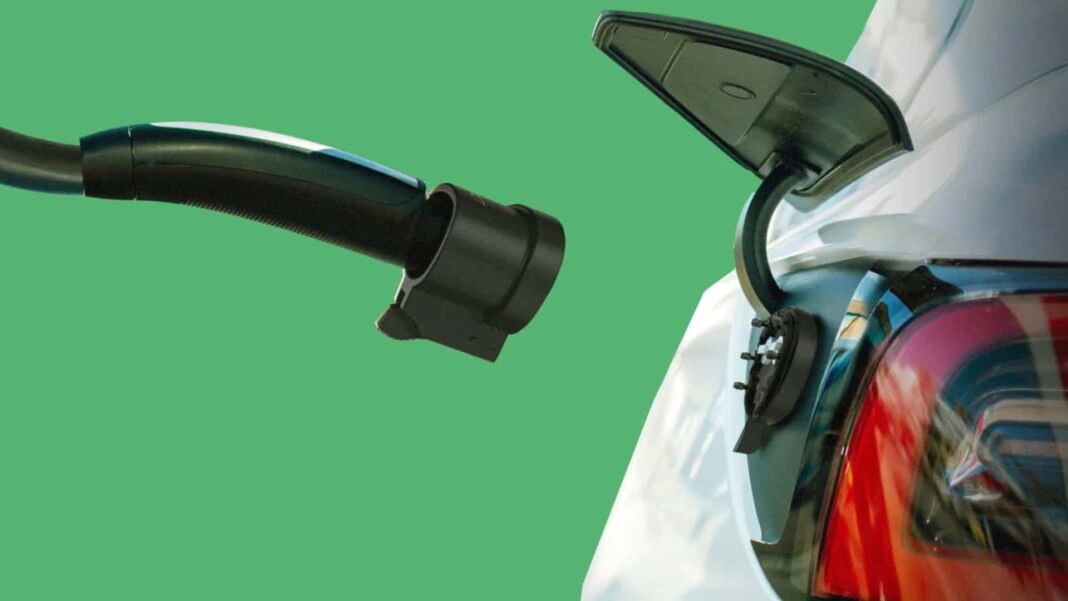- Tesla sued EVject earlier this year because its Escape Connector was allegedly “unsafe.”
- Tesla dropped the case after a lot of back and forth and several attempts at shutting down the startup’s project.
- The Escape Connector breaks in half, allowing EV owners to escape a dodgy situation while charging.
Imagine the following scenario. It’s late evening, and you’re waiting for your EV to charge at a public DC charging station. You’re inside the vehicle and you see someone approaching. What do you do?
Maybe it’s nothing, but you’d rather drive away, just for peace of mind. Here’s the kicker, though: first, you need to unplug the charging cable. Do you have enough time? Will the person approaching you pick up the pace once he sees you are getting out of the car?
It’s a gut-wrenching experience and it’s why Utah-based EVject developed the Escape Connector. In short, it’s a sort of adapter that you hook up to the end of the charging cable and then plug in to recharge. If you need to drive away in an emergency, you just stop the charging session from the EV’s screen and then drive away. The connector is available for cars with a NACS, CCS1 or CCS2 plug.
EVject’s connector splits in half, leaving behind the charging cable and bringing some much-needed peace of mind. Once the charging session is stopped, there’s no electricity running through the charger’s cable or the piece left in the charging port, so it’s completely safe.
Tesla, however, didn’t think so. It sued EVject earlier this year, claiming that the device was “unsafe.” Tesla subjected the Escape Connector to some stress testing and concluded that the temperature could exceed 212 degrees Fahrenheit after 30 minutes.
According to EVject’s founder, Kreg Peeler, that testing session was deeply flawed and even Tesla’s equipment would have failed. “They didn’t use any communication connections. All they did was wire the two hot pins, which means even if we had a thermal sensor, it would have kept charging,” Peeler told InsideEVs. “The only way any adapter, including Tesla adapters, knows when to turn off is if it stops the communication pins, or if it sends a different signal across communications. They didn’t do any of that.”
Initially, Tesla sent a cease and desist letter to EVject, claiming that the Escape Connector and marketing materials surrounding it were infringing on Tesla’s trademark rights. EVject removed all Tesla references and everything else that could have had anything to do with trademark infringement, but then Tesla filed suit against EVject claiming the connector was unsafe.

5
EVject
The automaker eventually dropped the suit, but adapting the product to Tesla’s standard was “a guessing game,” according to EVject’s Kreg Peeler. The solution was to add a thermal sensor to the Escape Connector that automatically cuts off power if the surface temperature exceeds 140 degrees. But getting there was the tough part because Tesla didn’t simply say “Do this and you’ll be ok.” Instead, the maker of the Model 3 reacted when things were wrong, without offering the handbook for what needed to be done.
“Basically, they won’t tell you what it needs to be, but they’ll tell you when you missed,” Peeler said. “So that’s kind of the way they play, and I think part of it is they’re constantly changing, right? They’re constantly adapting and pushing their own standards, and therefore they don’t want to be on record quoting what the standard is because it might change next week. That’s my speculation, but that’s what happens when you’re really trying to change an entire industry.”
Peeler said he doesn’t hold any grudges against Tesla and reiterated several times during our interview that he and his company are Tesla fans. He just wishes things would have gone another way, with a little more constructive criticism and an easier collaboration.

Photo by: EVject
One half of the EVject Escape Connector remains in the car’s charging port and it can be easily removed after getting to safety.

Photo by: EVject
The other half remains on the charging wand and it can also be removed without any risk of electric shock.
“We just wish they did things a little bit differently,” the startup’s founder said. “We don’t like the fact that there is a big public notice saying that we were ‘unsafe’ because we just don’t think that’s the true statement.”
As for the roughly 3,500 people who ordered the device before the whole court case fiasco, they were offered free replacements with the updated version, but only 600 or so chose to go down this route. The remaining 2,900 kept their original connector was “fine.” Customers who need to use the connector in an emergency situation will get a free replacement. Owners can extract the half that stays in the charging port without any risk of being electrocuted, but the connector is fitted together with a special press at EVject’s facility, so putting it back together by hand is impossible.
“We’ve never had one complaint from a customer,” Peeler said. “And they also recognize that the new device isn’t going to change anything. We’re not changing our materials. We’re not changing the way it conducts electricity. Nothing about the device is changing, except if, frankly, Tesla overdrives their equipment, our device will turn off. That’s it.”\

